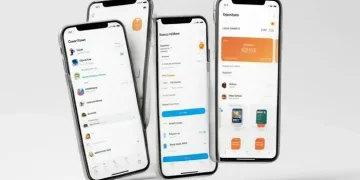Student loan: how to manage and pay off debt without stress

Dealing with a student loan can feel overwhelming, but it doesn’t have to be. Whether you’re just starting repayment or looking for ways to pay off debt faster, this guide breaks down everything you need to know—without the jargon.
Understanding student loans: types and terms
Student loans come in different forms, each with its own terms and conditions. The two main types are federal student loans and private student loans. Federal loans, backed by the government, often have lower interest rates and flexible repayment options. Private loans, offered by banks or credit unions, may have higher rates but can fill gaps when federal aid isn’t enough.
Federal Student Loans: Subsidized vs. Unsubsidized
Subsidized loans are need-based, and the government covers interest while you’re in school. Unsubsidized loans are available to all students, but interest starts accruing immediately. Knowing the difference can save you thousands over time.
Private Student Loans: What to Watch For
Private loans often require a credit check and may have variable interest rates. Some lenders offer cosigner release options, but penalties for late payments can be steep. Always compare multiple offers before committing.
Loan terms—such as repayment length, grace periods, and deferment options—vary widely. Some federal loans even offer income-driven repayment plans, which adjust monthly payments based on your earnings. Understanding these details helps you choose the best loan for your situation.
How interest rates affect your student loan
Interest rates play a huge role in how much your student loan will ultimately cost. A lower rate means paying less over time, while a higher rate can add thousands to your total debt. Federal loans typically have fixed rates, while private loans may offer variable rates that change over time.
How Compound Interest Works
With student loans, interest often compounds daily, meaning you pay interest on previously accrued interest. This can significantly increase your total repayment amount, especially if you defer payments during school.
Fixed vs. Variable Rates
Fixed rates stay the same for the life of the loan, making payments predictable. Variable rates may start lower but can increase with market changes, potentially raising your monthly payment unexpectedly.
Even a 1% difference in your interest rate can cost you thousands over a 10-year repayment period. If possible, prioritize loans with the lowest rates or consider refinancing to secure a better deal later.
Creating a budget to manage student loan payments
Managing student loan payments starts with creating a realistic budget that accounts for your monthly obligations. Begin by listing all your income sources and fixed expenses, then determine how much you can allocate toward loan payments without sacrificing essential needs.
The 50/30/20 Budget Rule
A popular method is dividing your after-tax income: 50% for needs (rent, food, minimum loan payments), 30% for wants, and 20% for debt repayment and savings. Adjust these percentages if you need to pay loans faster.
Tracking Your Spending
Use budgeting apps or spreadsheets to monitor where your money goes each month. You might discover unnecessary expenses that could be redirected toward paying down your student loans faster.
Remember to include automatic payments in your budget – many lenders offer interest rate discounts for setting these up. Also consider building a small emergency fund (1-2 months of expenses) to avoid missing payments during financial setbacks.
Strategies to pay off student loans faster
Paying off student loans faster requires strategic planning and commitment. Start by making more than the minimum payment whenever possible – even small additional amounts can shave months or years off your repayment term.
The Avalanche vs. Snowball Methods
The avalanche method targets loans with the highest interest rates first, saving you the most money long-term. The snowball method pays off smallest balances first for quick wins that boost motivation.
Making Biweekly Payments
Instead of one monthly payment, split it in half and pay every two weeks. This results in 13 full payments per year instead of 12, accelerating your payoff timeline without feeling the pinch.
Consider allocating windfalls like tax refunds or bonuses directly to your loan principal. Even temporary side gigs can generate extra payments that make a big difference over time.
Refinancing Considerations
If you have good credit, refinancing to a lower rate can help you pay off loans faster. However, be cautious about losing federal loan protections if you refinance federal loans through a private lender.
Income-driven repayment plans explained

Income-driven repayment (IDR) plans can be a lifesaver for borrowers struggling with federal student loan payments. These plans adjust your monthly payment based on your income and family size, typically capping payments at 10-20% of your discretionary income.
Types of IDR Plans
There are four main IDR options: REPAYE (Revised Pay As You Earn), PAYE (Pay As You Earn), IBR (Income-Based Repayment), and ICR (Income-Contingent Repayment). Each has different eligibility requirements and payment calculations.
How Payments Are Calculated
Your payment amount considers your adjusted gross income, family size, and state poverty guidelines. Payments are recertified annually and can change as your income fluctuates – they may even drop to $0 for very low incomes.
After 20-25 years of qualifying payments (depending on the plan), any remaining balance may be forgiven. However, be aware that forgiven amounts may be taxable as income in some cases.
Applying for an IDR Plan
You’ll need to submit documentation of your income through the Federal Student Aid website. The process is free – never pay a company to enroll you in an IDR plan.
Refinancing student loans: pros and cons
Refinancing student loans can potentially save you thousands, but it’s not the right choice for everyone. By combining multiple loans into one with a private lender, you might secure a lower interest rate or better repayment terms, but you’ll lose federal loan protections in the process.
When Refinancing Makes Sense
Consider refinancing if you have stable income, good credit (typically 650+), and primarily private loans. Those with high-interest graduate school loans or who’ve significantly improved their credit score since borrowing often benefit most.
Potential Downsides to Consider
Refinancing federal loans converts them to private loans, meaning you lose access to income-driven repayment plans, potential forgiveness programs, and flexible deferment options. This could be risky if your financial situation changes.
Watch out for variable rate loans that start low but can increase over time. Also be aware that some lenders charge origination fees that might offset your interest savings.
How to Compare Refinance Offers
Get quotes from multiple lenders and compare the annual percentage rate (APR), not just the interest rate. Look at the total repayment amount over the life of the loan, not just the monthly payment difference.
Forgiveness programs and eligibility criteria
Student loan forgiveness programs can eliminate part or all of your debt, but each program has strict eligibility requirements you must meet. The most well-known option is Public Service Loan Forgiveness (PSLF), which forgives remaining balances after 120 qualifying payments for government and nonprofit workers.
Public Service Loan Forgiveness (PSLF)
To qualify for PSLF, you must have federal Direct Loans, work full-time for a qualifying employer, and make 120 payments under an income-driven repayment plan. Many applicants get denied for not meeting all requirements, so triple-check your eligibility.
Teacher Loan Forgiveness
Teachers serving low-income schools may qualify for up to $17,500 in forgiveness after five consecutive years. Special education teachers and those teaching high-need subjects typically qualify for the maximum amount.
Income-Driven Repayment Forgiveness
After 20-25 years of payments under an IDR plan, your remaining balance may be forgiven. However, the forgiven amount may be taxed as income unless you qualify for PSLF or the tax exclusion is extended.
State-Specific Programs
Many states offer loan repayment assistance for professions like healthcare workers, lawyers in public service, or STEM teachers. These programs often require multi-year commitments to underserved areas.
How to avoid defaulting on your student loan
Defaulting on student loans can have serious consequences like damaged credit, wage garnishment, and loss of federal benefits. The key to avoiding default is proactive communication with your loan servicer and knowing your options before you miss payments.
Early Warning Signs
Watch for missed payment notices or changes in your financial situation that might make payments difficult. Federal loans don’t default until you’re 270 days late, but private loans may default much sooner.
Immediate Action Steps
If you’re struggling, contact your servicer immediately to discuss forbearance (temporary pause) or deferment (postponement). You may qualify for income-driven repayment plans that lower monthly payments based on your income.
Loan Rehabilitation Programs
If you’ve already defaulted on federal loans, rehabilitation programs let you restore good standing by making 9 affordable monthly payments. This removes the default from your credit report.
Preventing Future Problems
Set up automatic payments to avoid missed due dates. Consider consolidating multiple federal loans for simpler management. Regularly update your contact information with your servicer to ensure you receive important notices.
Impact of student loans on credit score
Student loans can significantly impact your credit score, both positively and negatively, depending on how you manage them. These loans appear on your credit report as installment debt, which affects your credit mix and payment history – two key factors in credit scoring models.
Positive Credit Impacts
Making on-time payments builds a positive payment history, which accounts for 35% of your FICO score. A student loan also adds to your credit mix (10% of your score) and lengthens your credit history (15%) if it’s one of your older accounts.
Negative Credit Consequences
Late payments can damage your credit for up to seven years. Defaulting is even more severe, potentially dropping your score by 100+ points. High student loan balances relative to your income may also affect your ability to get new credit.
Credit Utilization Considerations
Unlike credit cards, student loans don’t affect your credit utilization ratio. However, lenders may consider your debt-to-income ratio when you apply for mortgages or other large loans.
Rebuilding Credit Strategies
If student loans have hurt your credit, focus on making consistent on-time payments. Consider setting up automatic payments or exploring rehabilitation programs for defaulted loans to start rebuilding your credit history.
Balancing student loan payments with other financial goals

Juggling student loan payments with other financial priorities requires strategic planning and smart budgeting. While paying off debt is important, you shouldn’t neglect other critical goals like saving for emergencies, retirement, or major life purchases.
The 50/30/20 Budget Approach
A balanced approach allocates 50% to needs (including minimum loan payments), 30% to wants, and 20% to savings/debt payoff. You might adjust these percentages temporarily to tackle high-interest debt more aggressively.
Emergency Fund Essentials
Before making extra loan payments, build a basic emergency fund of $1,000-2,000. This prevents new debt when unexpected expenses arise. Later, aim for 3-6 months of expenses while making standard loan payments.
Retirement vs. Debt Payoff
Don’t neglect retirement savings completely – contribute enough to get any employer match first, as this is free money. Then focus extra funds on high-interest student loans (typically those above 6% interest).
Goal Prioritization Strategies
List your financial goals by importance and timeline. Short-term goals (saving for a car) might take temporary priority over extra loan payments, while long-term goals (buying a home) may require balancing both.
Resources and tools for student loan borrowers
Navigating student loans becomes easier with the right resources and tools. From government websites to budgeting apps, these resources can help you manage payments, explore forgiveness options, and make informed financial decisions.
Government Resources
The Federal Student Aid website (studentaid.gov) offers repayment calculators, loan simulator tools, and official information about all federal repayment and forgiveness programs. Their loan servicer portal lets you manage all federal loans in one place.
Budgeting and Payment Tools
Apps like Mint, You Need A Budget (YNAB), and Undebt.it help track payments and create payoff strategies. The Student Loan Planner tool provides personalized repayment recommendations based on your loan types and career path.
Nonprofit Counseling Services
Organizations like the National Foundation for Credit Counseling (NFCC) offer free student loan counseling. They can help you understand repayment options and avoid scams targeting borrowers.
Employer Assistance Programs
Check if your employer offers student loan repayment assistance as a benefit. Some companies contribute directly to employee loans, while others provide access to financial counseling services.
Taking Control of Your Student Loan Journey
Managing student loans doesn’t have to feel overwhelming. As we’ve explored, there are numerous strategies and resources available to help you navigate repayment, from income-driven plans to forgiveness programs and smart budgeting tools.
Remember that every borrower’s situation is unique – what works for one person might not be the best solution for you. The key is to stay informed about your options, communicate regularly with your loan servicer, and make decisions that align with both your current financial reality and future goals.
Whether you’re just starting repayment or looking for ways to accelerate your payoff timeline, taking consistent, informed action will put you on the path to financial freedom. Your student loans are just one chapter of your financial story – with the right approach, you can turn this challenge into an opportunity to build lasting money management skills.






